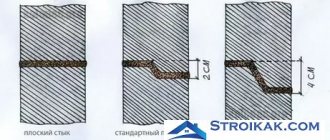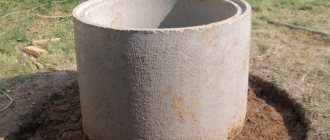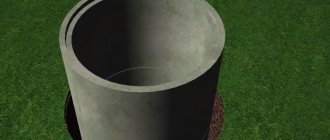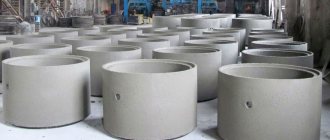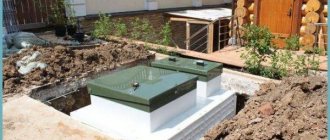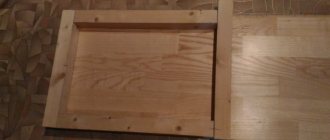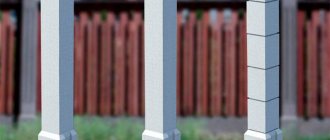The presence of a well, sewerage, drainage basin or laying of cables are integral components of the arrangement of the territory of a private farm. In addition to compliance with sanitary and hygienic standards and technical requirements, each owner counts on the long-term operation of these communications, therefore, first of all, attention is paid to reinforced concrete products. Their reliability, with the correct selection of the required dimensions of concrete rings for the well and proper installation, guarantees more than 100 years of trouble-free operation of the treatment system.
Concrete rings.
Types of concrete rings for a well
Well rings are cylindrical products made of reinforced concrete, used in construction for the arrangement of underground utilities. In addition to the construction of wells for drinking water, they are used in the assembly of sewer and waste columns, settling tanks and reservoirs for various purposes. Quality characteristics must comply with GOST No. 8020-90.
The production of reinforced concrete products is carried out by pouring a cement mixture into a mold (formwork), pre-reinforced with steel wire Ø 8-12 mm. Vertical rods should be provided at opposite ends of the product, which will subsequently be used as lugs for lifting the structure. Due to vibration, the material becomes compacted, which leads to loss of part of the volume. It is replenished by re-filling and the mold is shaken again, achieving complete elimination of air from the body of the product. The finished ring is obtained after the cement mass has set.
Tempering strength (50% of the required) is achieved within 7 days, and full strength - after 28-30 days. According to their purpose, reinforced concrete products are divided into the following types:
- Supporting ones, which are laid at the base of the well.
- Wall, used for narrowed areas of the structure.
- For drainage systems.
- For water and gas wells.
- For sewer and drainage networks.
- For protecting power supply cables.
Wall concrete rings.
In addition, they are classified according to the docking method. There are products with and without folds. The latter have flat and smooth edges and are installed one on top of the other. Such a connection requires precision, and subsequently additional sealing of the joints. The presence of folds - a recess at one end and a protrusion at the other - provides a more reliable locking connection.
There are also prefabricated structures consisting of several sections and monoliths made to order. The advantage of the latter is the absence of connecting seams, which have a risk of leakage, as well as the elimination of the need to adjust each subsequent element to the previous one. The dimensions of the monoliths are limited only by the conditions of transportation of the product to the installation site.
The last qualification concerns the form. Round and square are considered standard, but in accordance with the presented project, rings with a cross-section of any configuration and complexity can be made.
Polymer rings for sewerage
Another type of large-diameter rings is sold on the construction market, from which sewer wells can be assembled; they are made from a composite consisting of polymer and sand. Polymer sand rings, unlike concrete ones, have the following features:
- The weight of one element with a diameter of 1 m is about 45 kg, so they are easy to load, transport and assemble.
- Polymer sand products are resistant to corrosion and most aggressive chemicals; the sewage system made from them does not require waterproofing.
- Resistant to high and low temperatures over a wide range and their differences.
- Installation of sewer rings on a tongue-and-groove locking connection prevents displacement of elements and ensures high sealing.
- Their service life, unlike concrete analogues, according to manufacturers reaches 100 years.
- The main disadvantage of the products is their prohibitively high price, which limits their scope of application.
- Also, due to the low weight, when constructing wells from dug-in polymer-sand segments, it is better to bury them with a cement-sand mixture - when it hardens, it will create a rigid, heavy frame, although it will further increase the cost of the entire structure.
Rice. 10 Dimensions and design of well plastic rings for sewerage installations
Related article:
Sewage tanks - types and materials of manufacture, installation diagrams . It may be interesting to read about ready-made containers that are used to construct storage tanks when constructing an autonomous sewer system.
Types and sizes of polymer rings
The most common internal diameters of the wall polymer-sand sewer element are 750, 1000 and 1500 mm, its standard height is 200 mm; higher rings of 250 mm are less common. Prefabricated wells are equipped with a bottom up to 50 mm thick and cone-shaped top plates with a height of 80 to 150 mm, which have a central round hatch closed with a polymer lid.
It might be interesting to know about the water supply and sewerage protection zone
Installation of sewer wells made of polymer materials
Due to its low weight, installation of a drainage polymer-sand well takes a small amount of time; the main labor costs go to digging the hole. When installing a septic tank, the assembly of an additional drainage well is carried out in the following order:
- Dig a hole of the required depth mechanized or manually, controlling the verticality of the walls with a plumb line with a load.
- Before installing the rings, sand and crushed stone with a total thickness of about 700 mm are poured into the bottom of the pit, then installation begins.
- One person lowers into the shaft, and the second gives him rings on a rope, the weight of which does not exceed 45 kg. After complete lock assembly of the entire structure, a cone-shaped plate with a hatch for installing the cover is installed on top; a hole for the drain pipe can be cut from the outside or inside of the well with a grinder with a metal or concrete disc.
- At the end of the work, the free space between the pit and the polymer-sand rings is filled with a cement-sand mixture in a ratio of 1:4 or 1:5 (depending on the brand of cement).
Rice. 11 Price list 2022 for polymer sand modules
To install a drainage sewer well with your own hands, most homeowners use concrete rings of different sizes, covering the entire structure with a slab with a hatch and a polymer cover. An alternative to concrete products is the installation of rings made of polymer sandstone, however, due to their high cost and low weight, which weakens the locking joints, the product is not in wide demand among the average consumer and is rarely used for constructing drainage sewer wells.
Advantages and disadvantages
Reinforced concrete structures have long occupied a leading position in the building materials market, but even when using them, the buyer must be prepared to encounter some difficulties. When compared with similar products made from other materials (plastic, polymer mixtures), undeniable advantages can be identified:
- suitability for all types of structures;
- affordability of prices;
- large selection of size models;
- durability and strength ensured by the use of heavy reinforced concrete grades 200-500;
- rigidity of the structure, which can also be installed on unstable soils;
- simplicity and speed of installation;
- the ability to produce components on site with your own hands;
- reliable protection against seasonal swelling of the soil and against entry into the groundwater system.
Reinforced concrete structures.
Disadvantages include:
- transportation difficulties;
- dimensions and weight, which require the use of special equipment during installation;
- lack of mobility (it is extremely difficult to move an installed well).
However, these difficulties do not affect the popularity of concrete rings in any way. Buyers are well aware of both transport and installation costs and are prepared for them in advance.
Requirements
Before installing different types of rings, you must follow these rules.
- Firstly, it is impossible for dirty liquid to get into the drinking water well. Those. For the collection of sewage waste, separate wells should be equipped, located as far as possible from the source of drinking water. And equipped with a waterproofing system.
- Secondly, for technical inspection it is necessary to provide for the presence of special inspection rooms. Which will be protected from water getting into them.
Each ring, regardless of the material of manufacture, must contain markings. It consists of an index that shows the purpose of the ring. And also from numbers indicating the size of the device.
It is also worth considering that concrete rings are installed only with the help of special equipment. As for the reinforced concrete system, its installation requires the presence of equipment such as cranes.
Important! When installing concrete rings, the bayonets are covered with concrete and a rubber strip is placed between the rings.
Ring size
The height of the product, weight, volume, internal and external diameters, as well as the width of the walls - all these indicators make up its dimensional characteristics, which can be standard or non-standard. The latter includes rings made to special order or in small batches.
Depending on the purpose for which the utility line is installed, additional elements may be needed, including:
- Bottom plates that ensure the reliability and watertightness of the base (or rings with a solid bottom).
- Floor slabs that have a hole in the body of a smaller diameter on which a seat for a sewer hatch is mounted.
- Additional rings are products of a standard diameter, but with a smaller height, necessary to bring the well to the desired level above the ground.
Bottom plates.
Their use helps to increase the service life, protects against contamination and gives the structure a finished look.
How to choose
There are several aspects that need to be considered when purchasing reinforced concrete rings. This is compliance with the required volume of the septic tank, GOST, sanitary and hygienic requirements, and the strength characteristics of the product. The size determines the prices for the product itself, its transportation and installation, including preparatory excavation work. And depending on how much the ring weighs, it is necessary to use special equipment during installation.
A preliminary calculation of the required capacity helps determine the dimensions. When arranging a sewer system for a septic tank consisting of two sections (one section is just a cesspool), the formula is used:
V = (n*Q*t)/1000,
where V is the required volume in m³, n is the number of people in the house, Q is the water consumption per person per day, t is the number of days required for a full cycle of water purification according to SNiP. On average, this is at least 1.2 m³ per resident. Sanitary standards require that the liquid settle for more than 3 days in the primary treatment tank, where suspended matter settles and the action of anaerobic bacteria occurs. Therefore, if only 500 liters are discharged per day, its capacity cannot be less than 1500 liters.
Dimensions of rings for wells.
For a water well, complex calculations are not required, but the following factors must be taken into account:
- potential debit of the aquifer;
- planned consumption;
- financial expenses.
If the set is carried out on one standard ring with a height of 90 cm, then with a meter diameter the water supply will be 680 l, with a Ø 1.5 m - 1500 l, and with a Ø 2 m - 2800. Sales statistics say that for everything related to sewage , designs with a diameter of 1.5 m are more often used, and for wells - 1 m.
When choosing, you should also pay attention to the strength of the product (wall thickness, presence of reinforcement), which is especially important when working in problematic soils. The surface of the reinforced concrete products must be rubbed with cement mortar and free from chips, cracks and cavities. The presence of rust on the lifting eyes is unacceptable (they may break during installation). The permissible slope of the walls cannot exceed 1.5%. Upon purchase, a hygiene certificate and a passport must be issued, which indicate the date of manufacture, materials used, brand of concrete, whether it was steamed in the oven or not.
Deciphering the markings
Each reinforced concrete product, according to GOST standards, must have alphanumeric markings on the surface that correspond to its purpose and reflect two dimensional characteristics. The scope of application is marked with letters:
- KS - wall ring (through);
- KO - support;
- KSD - wall with bottom;
- KFK - septic tanks and fecal sewerage;
- KLK - storm drains;
- KGV - water and gas communications;
- KLV - storm water intake wells.
Ring markings.
The numbers indicate parameters, rounded up and expressed in decimeters:
- Inner Ø.
- Height.
So, for example, the marking KS 10.9 stands for “wall ring with an internal cross-sectional diameter of 1 m and a height of 89 cm.”
Standard sizes
GOST establishes a wide range of products, since the standard sizes must fully satisfy the needs of builders in arranging systems of any complexity. Therefore, they have versatility and great possibilities for compatibility. The dimensions look like this:
- Height. Three are considered standard: 29, 59 and 89 cm (in industrial construction, 119 cm is used).
- Wall thickness. Available in 7, 8, 9 and 10 cm.
- Inner Ø. Four main ones: 70, 100, 150 and 200 cm.
- External Ø. From 84 to 220 cm.
- Useful volume. Varies from 0.05 to 0.59 m³.
Standard ring size.
KS 25.12 has the largest dimensions, but it is not used in private construction, because it is not possible to install it without special equipment.
The weight of the ring depends on three factors:
- type of aggregate, brand of concrete;
- quantity and weight of reinforcement used;
- volume of concrete depending on wall thickness.
Each manufacturer uses its own technology, so the tonnage of even similar products varies depending on the supplier plant. You can only record the weight difference from 130 kg to 1.5 tons.
How to check ring size
Checking for compliance with GOST is carried out using two perpendicular diameters. At four points located in pairs opposite each other, the thickness of the concrete and the height of the reinforced concrete products are measured (for seam ones, additionally, the depth of the grooves and the dimensions of the tenon). A deviation of no more than 1.5% is considered acceptable. It is advisable to take measurements at both the top and bottom.
Dimensions of concrete rings.
What else do you need to buy?
In addition to the rings themselves, to install a water supply, sewerage or gas pipeline system, it is necessary to purchase additional elements, such as:
- bottom - the bottom slab will provide a solid foundation for the well;
- overlap - this element is designed to install a smaller ring on a larger one;
- additional product - it allows you to increase the height of the well with less weight.
Additional elements have a standard diameter, but smaller wall thickness, and can be used as upper components for a well, for example, a ring with a lid. Additional elements will help ensure the tightness of the structure and protect the pipes from freezing in the winter.
Which manufacturer to choose
In the Russian Federation, about 250 manufacturers are engaged in the production of reinforced concrete rings, covering the entire territory of the country. Therefore, traveling outside your region in search of cheap prices is not economically profitable. The savings will be consumed by transportation. However, the products of some factories are in special demand. We can highlight:
- "VTG Stroy" in Mytishchi, Moscow region, shipping its products throughout the country. Their KS 10.9, KS 15.9 and KS 20.9 rebated and flat models complete with a lid and hatch are in particular demand. The average cost is 2.1 thousand rubles.
- OJSC "Plant of Industrial Construction Parts", operating for more than 45 years in Tyumen. It has its own accredited construction laboratory, which allows not only to monitor quality, but also to develop new technologies.
- in Novokuznetsk is a supplier of high-quality reinforced concrete products throughout the Kemerovo region. In addition to producing standard designs, the company is also willing to accept orders for individual projects.
- in Krasnodar is distinguished by a wide range and high production capacity. Prices for reinforced concrete products start from 1.4 thousand rubles.
These manufacturers strictly monitor production technology and guarantee the quality of their products.
Types of wells
Several types of wells are used for different purposes. After studying the market, you can choose the appropriate option .
- Water intakes. By constructing such a structure, water is extracted from the aquifer for domestic needs: drinking, cooking, irrigation, etc.
- Tap water. In these wells, water is supplied using installed distribution and control equipment.
- Drainage With the help of wells of this type, drainage systems are serviced and repaired.
- Observations. Such structures are an important part of the sewerage system. With their help, repair work, performance testing and, if necessary, cleaning of the collector are carried out. Wells can be linear, nodal or rotary.
- Septic tanks. They belong to a modern version of a sewer well, in which wastewater not only accumulates, but is also cleaned.
- Telephone. They install, monitor and repair communication systems.
- Stormwater. Such wells are installed to collect and subsequently drain excess rain and melt water.
- For cesspools. A primitive version of a sewerage structure.
- For gas pipeline systems. Underground gas pipelines must be equipped with similar structures at the locations of valves and compensators.
- Special. Many owners of summer cottages use rings in a non-traditional way. For example, they set up small pools or cellars for storing workpieces.
Ring prices
The pricing policy is determined by the market, and therefore in different regions the same product will cost differently, but everywhere its price is directly dependent on the size. And if for KS 7.3 you will have to pay from 700 rubles, then for KS 20.9 - already about 4.5 thousand rubles. Purchasing from the manufacturer provides savings of 5-15% compared to construction markets. But when drawing up an estimate, in addition to spending on rings, the customer must keep in mind other expenses:
- digging a foundation pit for a structure;
- for delivery of products;
- for installation work;
- construction of a well house (optional);
- for additional materials, for example, cement for sealing joints or pebbles for the filtration bottom of a well.
It makes sense to cooperate with one supplier. In many cases, this will bring additional benefits in the areas of service, delivery and information support.
Area of the ring expressed in terms of outer and inner radii
Let a circle of radius R and a circle of radius r be given. Moreover, R>r. Let's align the centers of these circles. The figure enclosed between these circles will be a ring, with R being the outer radius and r being the inner radius. Then the area of this figure will be equal to the difference between the one with the larger radius and the area of the circle with the smaller radius.
The area of a circle with radius r is expressed by the formula: The area of a circle with radius R is expressed by the formula:
Then the area of the ring will be equal to:
Thus, the area of the ring is equal to the product of the number and the difference between the squares of the outer and inner radii:
An example of calculating the area of a ring if its radii are known. Find the area of the ring if its outer radius is 3 and its inner radius is 2
How to install correctly
It is difficult to install reinforced concrete rings with your own hands, but sometimes this is done due to the impossibility of special equipment access to the territory. Otherwise, you buy reinforced concrete rings at the construction site, hire a manipulator, and he performs loading, delivery to the customer’s site, and unloading. Unloading can be understood as direct installation.
Before installation, experts recommend going deep to the required depth, compacting the bottom, and adding a cushion of sand. Concrete will draw moisture from the ground, so a pillow is simply necessary. Do not skimp on this layer, and fill up to 10 centimeters of sand, inclusive. To some extent, this will level the base. Place a concrete bottom on the sand, then begin the phased installation of the rings.
Each of them has special hooks. They serve to secure the manipulator slings and to connect the rings together. After the first reinforced concrete product is lowered, the slings are released, the metal hooks are bent, and the second product is installed. Then, all the screams can be linked together using a welding inverter. The work is not difficult and even a novice welder can handle it.
When a well is being constructed and the work is done manually, it is not always possible to use the services of a manipulator. In this case, install the first ring and gradually dig inside it, which allows the rings to fall down.
Next, when the first one is lowered to its own height and stands parallel to the ground at the top, the second reinforced concrete product is installed and work continues in the same way. Experts recommend using a hole drill, with the ability to drill to a depth of 10 meters or more.
This will allow you to drill through the entire internal diameter, install the ring and dig manually only under its walls. You will save the required amount of time and get the job done professionally. To make your work easier manually, you will need a powerful winch. It should be firmly fixed, which will facilitate the process of raising and lowering the products.
What is the structure made of?
Supporting reinforced concrete sections for wells can be a combination of a bottom slab and a stacked top. But the tightness of the connection between them will be problematic. This seam, which is the deepest, will be subject to the greatest stress. Solution: instead of two products, take one - a structure with a bottom. Having the shape of a glass, it goes into the shaft first. This bottom can withstand heavy loads. Height – from 300 to 1,000 mm. Marked with the abbreviation KCD, they can be flat or chamfered at the end.
Above, standard high sections (HS) are mounted one on top of the other, sealing the connection. If it is necessary to bring the structure to the desired level, they are complemented by an additional ring, characterized by a low (up to 400 mm) section (standard heights 100, 150, 300 mm). Additional parts are marked according to structure: K (type), D (inner diameter, cm), H (height).
Well sections with a lock - do not have a smooth end, but are equipped with a chamfer (there is a recess on one edge, and a protrusion on the opposite). Such a factory-made part greatly facilitates installation and sealing of the connection.
In operation, a reinforced concrete barrel with a lock is more resistant to deformation under lateral loads. Under reinforced concrete, the locks have metal embedded parts welded to the reinforced frame.
Fastening brackets, as well as plates with bolts, are used for connecting reinforced concrete products. Structures with a lock require additional strengthening on moving, freezing soils.
Uneven loads that occur in autumn and spring are especially dangerous for a well (the lower layers of the soil freeze in a peculiar way and thaw later than the upper ones).
The shape of the staples can be different (H-shaped and more complex). They are made of steel 5 mm thick, the width of the element is up to 8 cm. For each connection, 3 pieces are enough.
The well needs running brackets for maintenance and visual inspection of its condition. A metal running bracket made of stainless steel or coated with plastic is placed into the product during casting or mounted afterwards (in the provided mounting holes or drilled ones) on dowels. They are installed at a distance of 300 mm from each other. The joints between the brackets and the pipe walls are sealed with cement.
